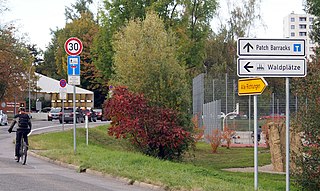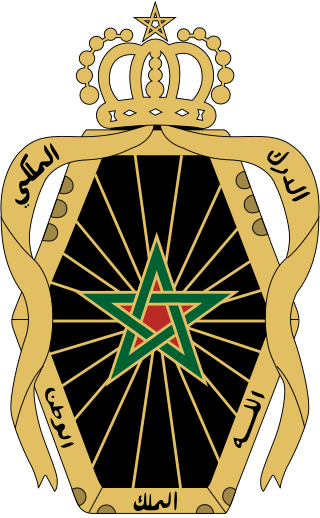
A gendarmerie is a military force with law enforcement duties among the civilian population. The term gendarme is derived from the medieval French expression gens d'armes, which translates to "men-at-arms". In France and some Francophone nations, the gendarmerie is a branch of the armed forces that is responsible for internal security in parts of the territory, with additional duties as military police for the armed forces. It was introduced to several other Western European countries during the Napoleonic conquests. In the mid-twentieth century, a number of former French mandates and colonial possessions adopted a gendarmerie after independence. A similar concept exists in Eastern Europe in the form of internal troops, which are present in many countries of the former Soviet Union and its former allied countries.

The Compagnies républicaines de sécurité, abbreviated CRS, are the general reserve of the French National Police. They are primarily involved in general security missions, but the task for which they are best known is crowd and riot control. The DCCRS has seven units: in Paris, Lille, Rennes, Bordeaux, Marseille, Lyon and Metz.

Canadian Forces Base Kingston is a Canadian Forces base in Kingston, Ontario.

The Vélodrome de Vincennes is a cycling stadium in the Bois de Vincennes, Paris, France.

"Frenchelon" is the nickname given to the signal intelligence system operated by France. The name is a reference to its Anglo-American counterpart ECHELON.

Patch Barracks is a U.S. military installation in Stuttgart, Germany. It is named after U.S. Army General Alexander M. Patch (1889–1945).

Hippodrome de Saint-Cloud is a grass race course for Thoroughbred flat horse racing opened in 1901 at 1 rue du Camp Canadien in Saint-Cloud near Paris, France. During World War 1, the race course site housed the No. 4 Canadian Stationary Hospital operated by the Canadian Army Medical Corp. On July 8, 1916 the No. 4 CSH was elevated to the No. 8 Canadian General Hospital and operated until decommissioned in 1919. The facilities were built by politician and Thoroughbred owner/breeder Edmond Blanc (1856–1920) in whose honor the Prix Edmond Blanc was established in 1921.

Butler's Barracks was the home of Loyalist military officer John Butler (1728–1796), in what was then Newark, Upper Canada; present day Niagara-on-the-Lake, Ontario. Butler is most famous for leading an irregular military unit known as Butler's Rangers on the northern frontier during the American Revolutionary War.

Candidplatz is an U-Bahn station in Munich on the U1 line of the Munich U-Bahn system. The station is named for the Flemish mannerist painter Peter Candid, who entered employ in Munich in 1586, producing notable artworks for the Munich Residenz. The station is notable for the decorative scheme applied to the outer walls, which evoke a rainbow.

Aldershot Garrison, also known as Aldershot Military Town, is a major garrison in South East England, between Aldershot and Farnborough in Hampshire. The garrison was established when the War Department bought a large area of land near the village of Aldershot, with the objective of establishing a permanent training camp for the Army. Over time, this camp grew into a military town and continues to be used by the Army to the present day. It is home to the headquarters of the Army's Regional Command and Home Command, and it is also the headquarters for the Army Special Operations Brigade. The garrison plays host to around 70 military units and organisations.

The Royal Moroccan Gendarmerie is the national gendarmerie force of the Kingdom of Morocco, and comes under the joint-authority of the Minister Delegate to the Head of Government in charge of the administration of National Defense, Ministry of Interior and Minister of Justice.

Combined Arms Training Center (CATC) Camp Fuji is an installation of the United States Marine Corps next to the Japan Ground Self Defense Force JGSDF Camp Takigahara. It is located near the city of Gotemba in Shizuoka Prefecture, Japan, at the base of Mount Fuji. Camp Fuji is one of several Camps of the Marine Corps Base Camp Butler complex.

L'École des officiers de la gendarmerie nationale, the French Gendarmerie nationale Officers School, was created in 1901 and based in the Schomberg barracks in Paris. It provides a military education in order to train and teach military officers who enter the officer corps.
Qəzli is a village in the Ismailli Rayon of Azerbaijan. The village forms part of the municipality of Mican.
Öyləqulu is a village and municipality in the Kurdamir Rayon of Azerbaijan.

Camp Albert L. Mills was a military installation on Long Island, New York. It was located about ten miles from the eastern boundary of New York City on the Hempstead Plains within what is now the village of Garden City. In September 1917, Camp Mills was named in honor of a former Superintendent of the United States Military Academy at West Point, Major General Albert L. Mills, who had suddenly died the year prior in September 1916. Mills was awarded the Medal of Honor for gallantry during the Spanish–American War.

The camp de Châlons, also known as camp de Mourmelon, is a military camp of about 10,000 hectares at Mourmelon-le-Grand, near Châlons-en-Champagne. It was created at the behest of Napoleon III and opened August 30, 1857 during the Second French Empire.
Robinson Barracks is a military base of U.S. in the Burgholzhof community in the northern Stuttgart district of Bad Cannstatt. Unlike Patch Barracks and Kelley Barracks, also located in Stuttgart, the modern Robinson Barracks is now largely a residential neighborhood for US Department of Defense personnel stationed in the greater Stuttgart area operated and administered by IMCOM-Europe. The installation is named after 1st Lt. James E. Robinson, Jr. (1918–1945), an Army officer posthumously awarded the Medal of Honor during World War II.
Alabama-Halle was a concert and theatre venue in Munich, Germany, which was also used to broadcast the television programme Live aus dem Alabama. It was originally part of a military depot.

The Gendarmerie of Haiti, also known as the Haitian Constabulary, was a gendarmerie raised by the United States during its occupation of Haiti in the early 20th century. Established in late 1915, the gendarmerie was operational from 1916 until 1928, during which time it was Haiti's only military force, earning a reputation for active interference in civilian government that may have set the stage for the future politicization of Haiti's armed forces.

















